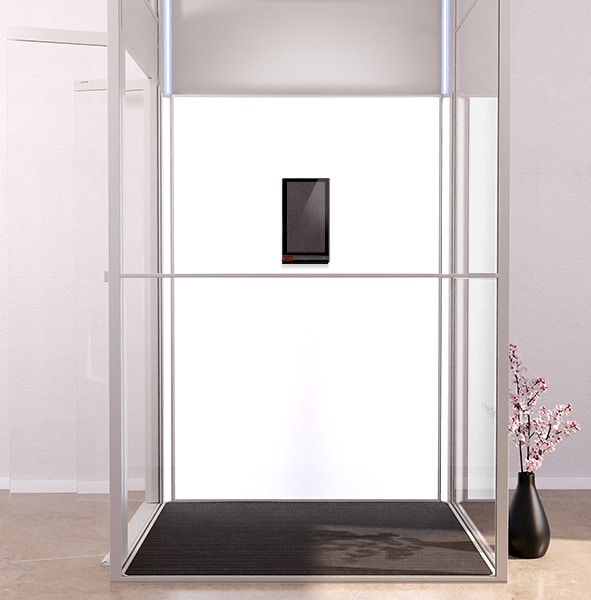Can I have a Lift for My House?
A home lift installation is now a practical and stylish solution for multi-floor residences. SWIFT home lifts are designed to fit homes with minimal space, requiring just 1366×880 mm (see all home lift sizes here). With various design options, a SWIFT lift can seamlessly blend into your interior style, adding both functionality and elegance to your home.
Installation Options
SWIFT home lifts can be installed:
- Directly on the floor
- Recessed in a shallow 50 mm pit
- Freestanding with fixtures on each landing
- Against a wall
- In the middle of a staircase
Thanks to the EcoDrive system, energy consumption is low, and installation only requires a standard 1-phase 220V (8A) power supply. While designed primarily for indoor use, some semi-outdoor installations are possible.

Key Factors to Consider Before Home Elevator Installation
- Available Space and Location
Assess your home for space availability. Choose an internal lift for seamless integration or an external lift if indoor space is limited. The location also affects construction work and aesthetics. - Type of Lift
Options include hydraulic, traction, screw-driven, pitless, and vacuum elevators. Each type has unique advantages: hydraulic lifts offer smooth operation, while vacuum lifts require minimal construction. Select a lift based on accessibility, convenience, or luxury needs. - Structural Requirements
Your home may require a shaft, reinforced floors, or minor architectural modifications. Pitless lifts reduce structural work, whereas traditional lifts may need extensive alterations. - Power Supply and Safety Features
Ensure your electrical system can support the lift. Look for essential safety features: emergency stop buttons, battery backups, door sensors, and alarm systems. - Budget and Maintenance
Costs vary by lift type, size, and customization. Consider long-term expenses like servicing and maintenance. Partnering with a reputable manufacturer can reduce future costs. - Compliance and Permits
Check local building codes and regulations to ensure a smooth installation process.
Conclusion
A home elevator installation enhances convenience, accessibility, and property value. By considering space, lift type, structural needs, power supply, and budget, you can make a well-informed decision. With trusted brands like SWIFT, you get a safe, stylish, and hassle-free lift installation tailored to your home.
Try our quick test: “Is a home lift suitable for your home?”
Explore SWIFT Home Lift Models:











